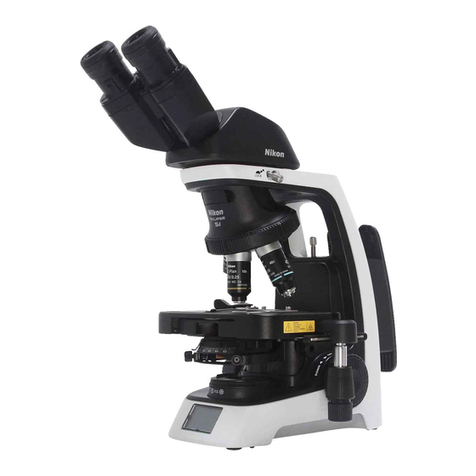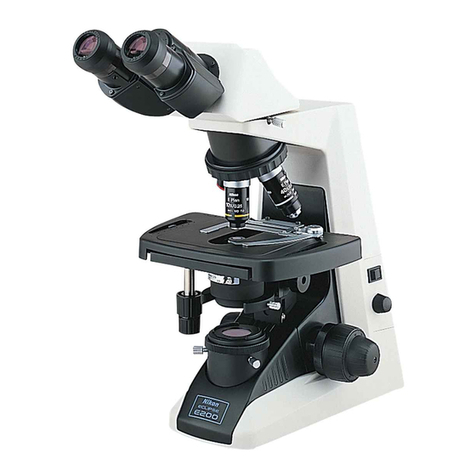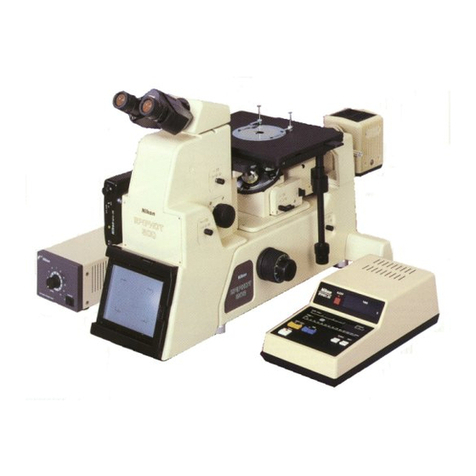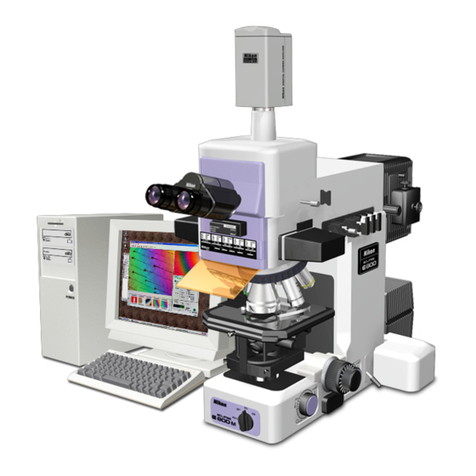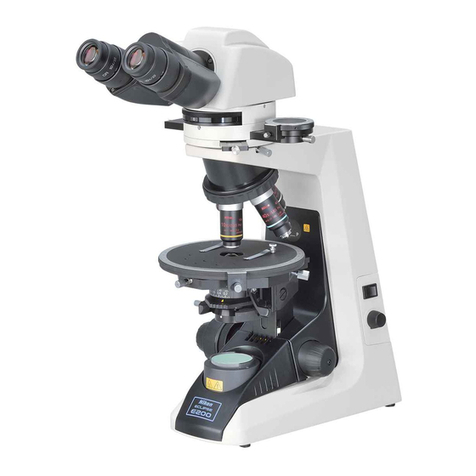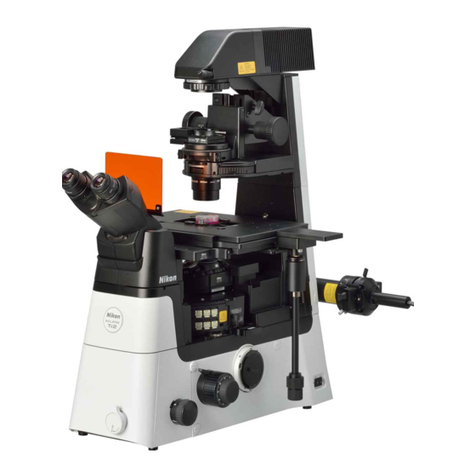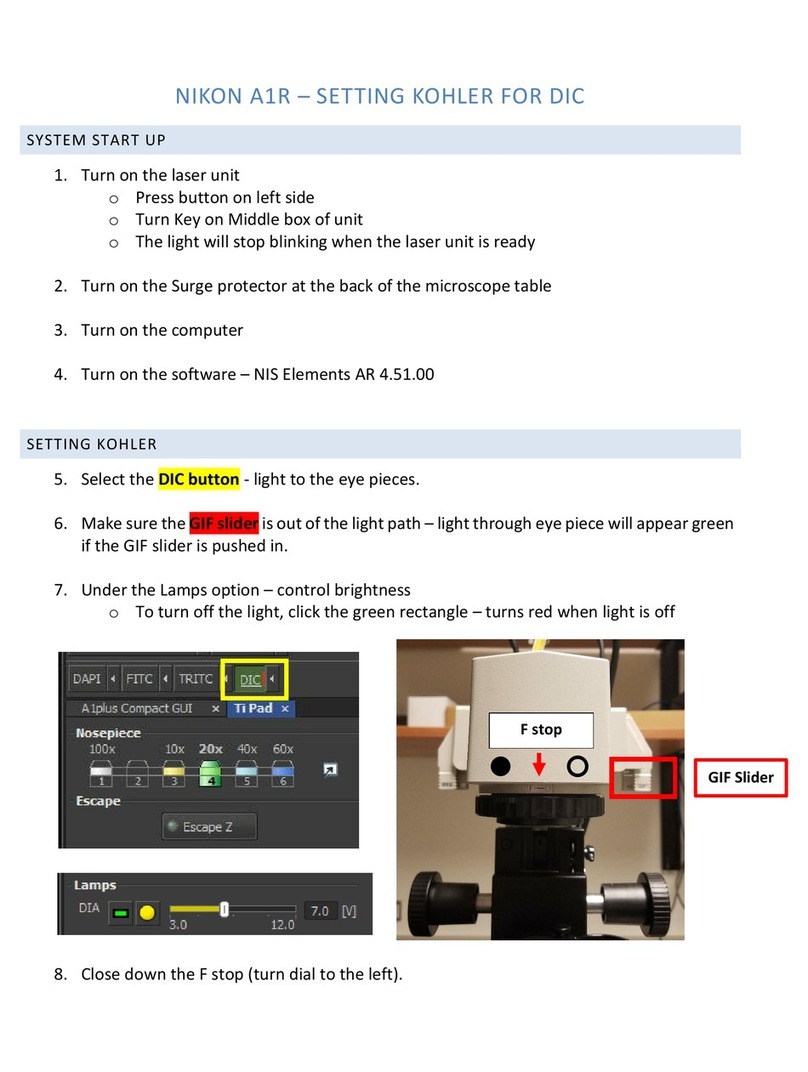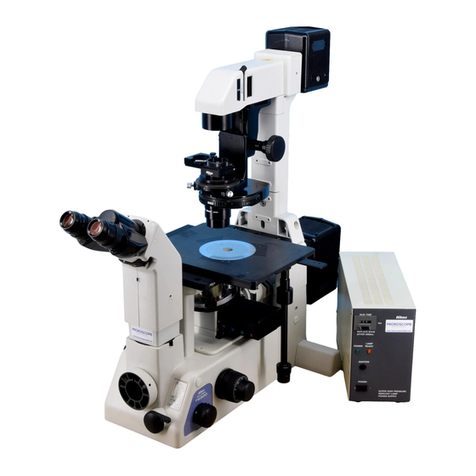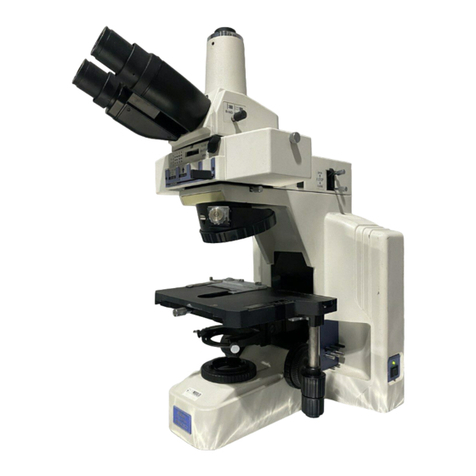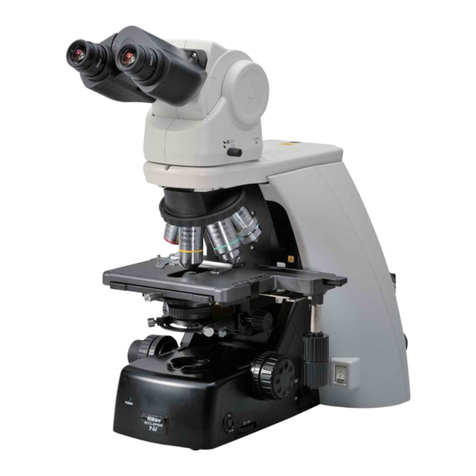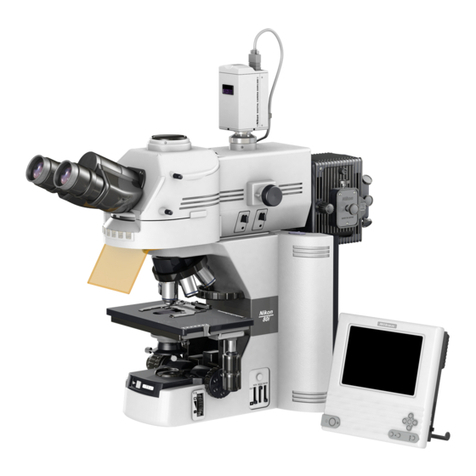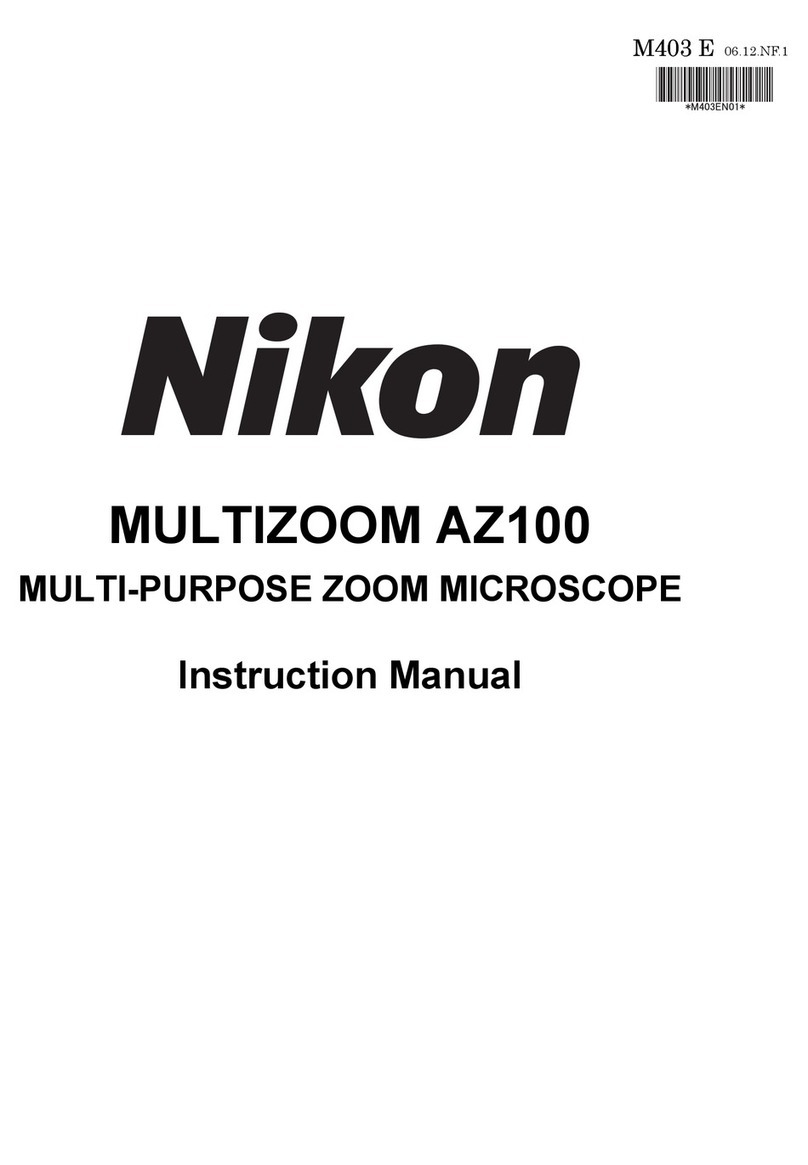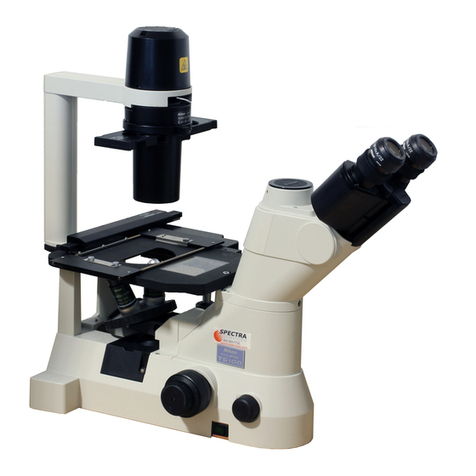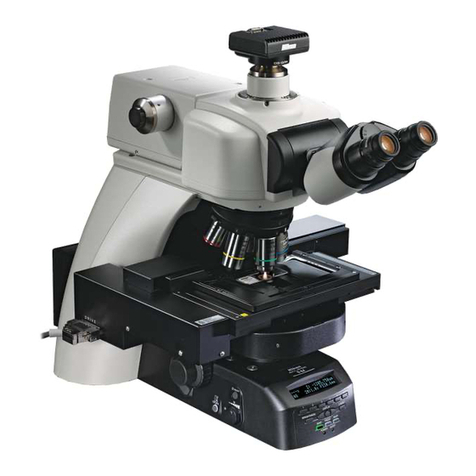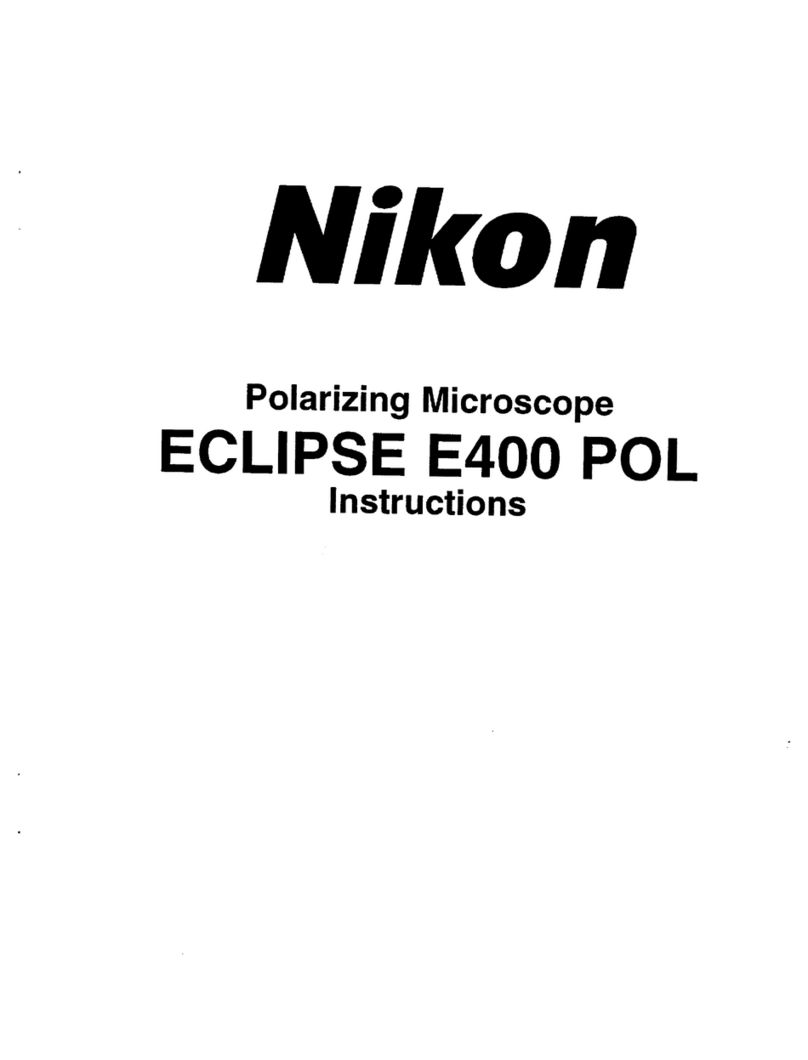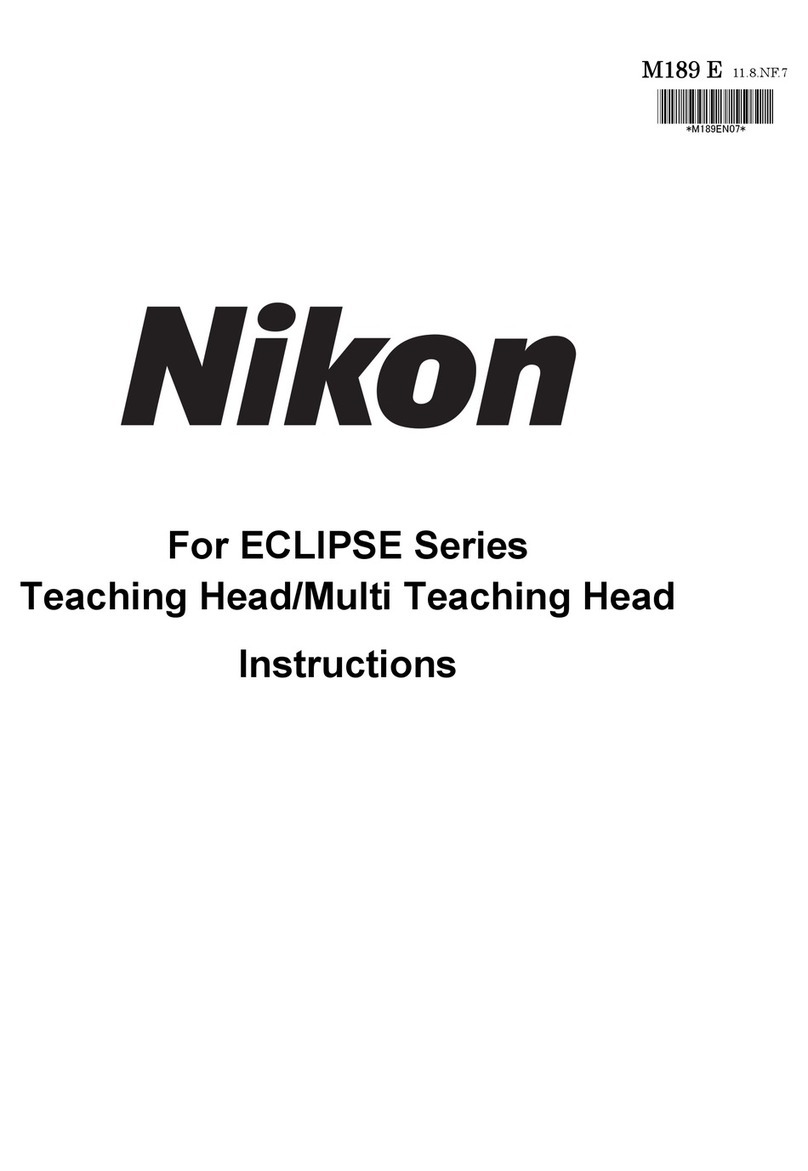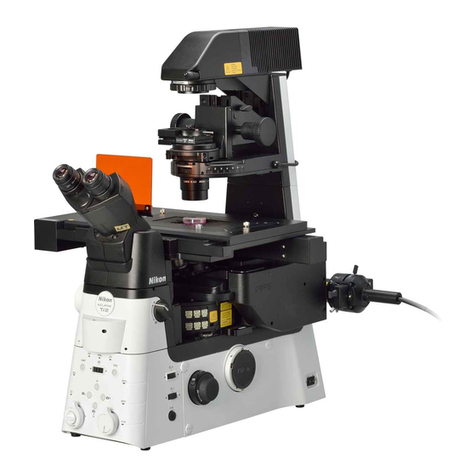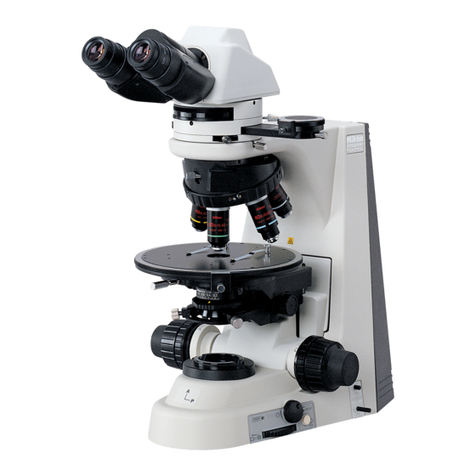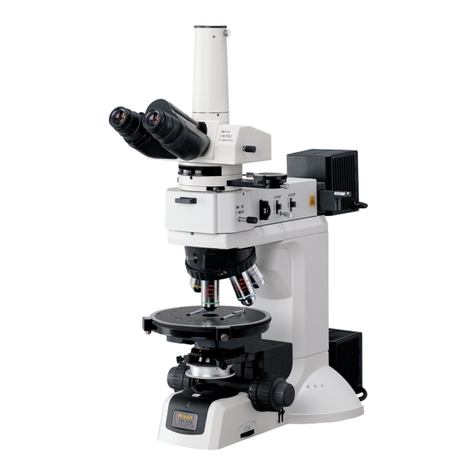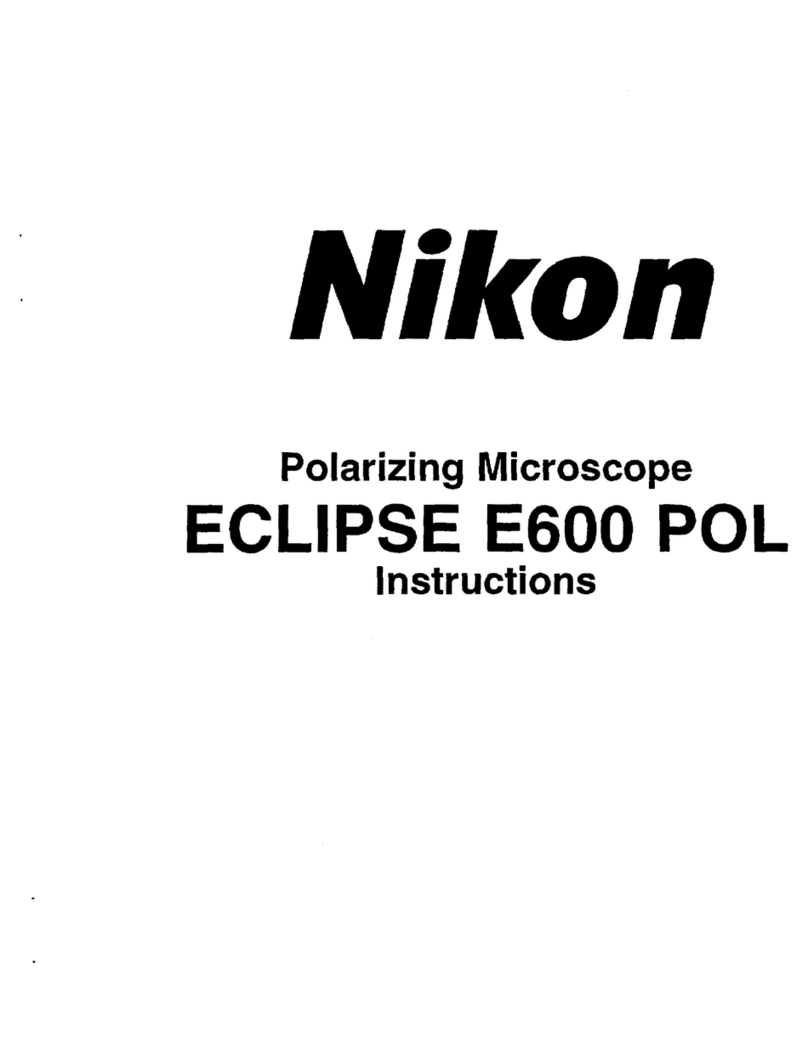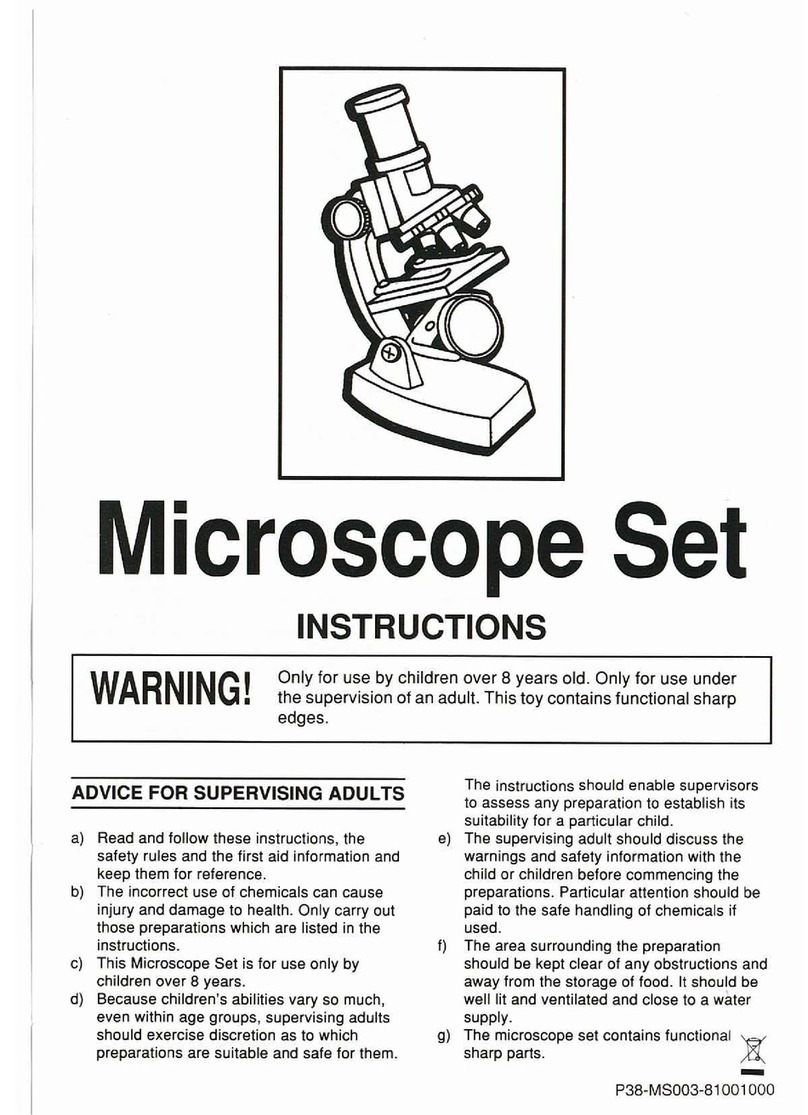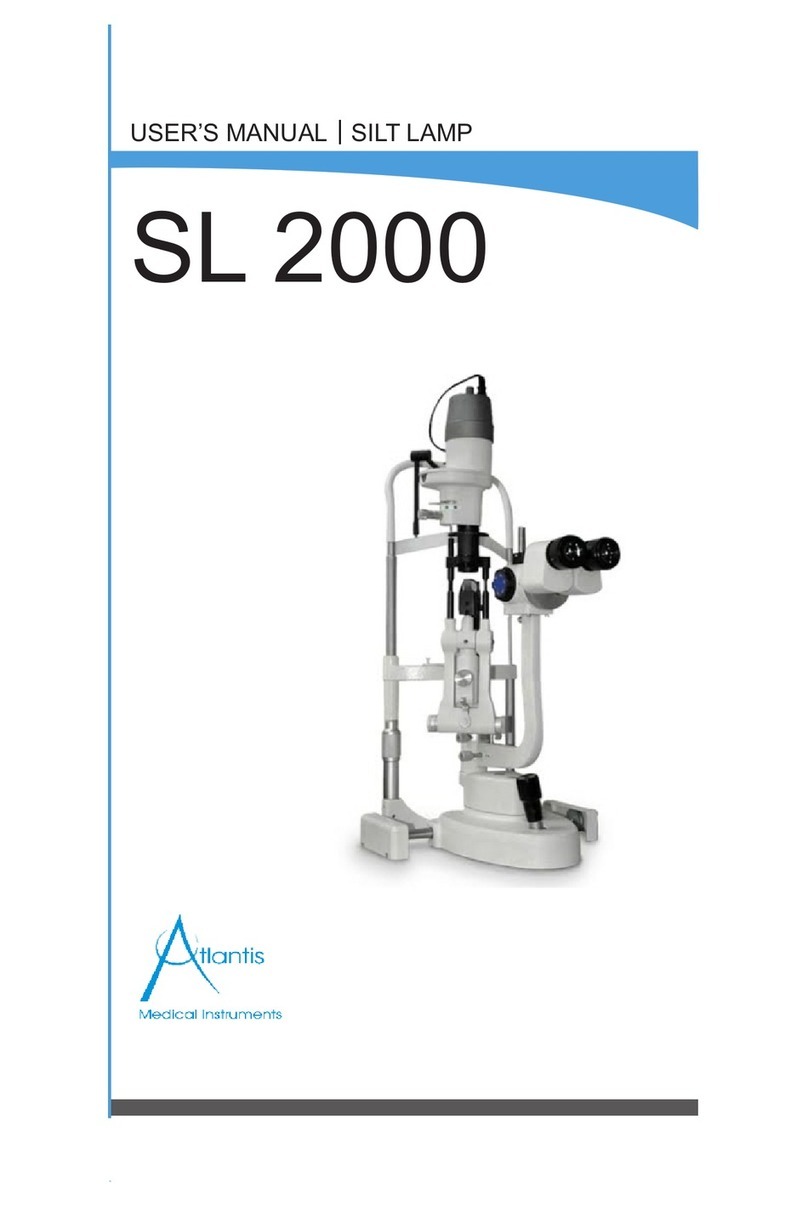
3
WARNING
7. Light source other than the specified ones
To perform the epi-fl microscopy wit the LV-UEPI2 illuminator, the specified light source
brightness may be less than the desired brightness. In this case, a light source other than the
specified ones, an external light source, can be used for the LV-UEPI2.
Use the X-Cite 120 (manual type) or X-Cite 120PC (motorized type) manufactured by
EXFO Electro-Optic Engineering Inc. for the external light source. In particular, when the
LV150A is used for the microscope main body, be sure to attach the X-Cite 120PC to
prevent a flash of light. The X-Cite 120PC must be connected with the LV150A through the
RS-232C cable attached to the light source. When the LV150 is used, either external light
source will work.
Please take note that if a light source other than the specified ones are installed onto this
microscope, this microscope system will not be treated as a TUV/SEMI approved product.
8. Heat from the light source
The lamp and the lamphouse become extremely hot. To avoid burns, do not touch the
lamphouse while the lamp is lit or for thirty minutes after it is turned off.
Furthermore, to avoid the risk of fire, do not place fabric, paper, or highly flammable
volatile materials (such as gasoline, petroleum benzine, paint thinner, or alcohol) near the
lamphouse while the lamp is lit or for about thirty minutes after it is turned off.
9. Air vents
Do not block the air vents on the microscope and lamphouse.
If the air vents are blocked, the temperature of the microscope will raise. And it results in
damage or fire.
10. Ultraviolet light from a light source other than the specified ones
If you use a light source other than the specified ones and that has a mercury lamp or so on,
the light source radiates ultraviolet light that is harmful to the eyes and skin from the
emission port. Direct viewing of light from these lamps may result in snow blindness at a
light case or blindness at worst. To prevent injury, follow the guidelines below.
1) Insert the UV collector lens into the optical path of the microscope unless the
UV excitation light is necessary.
On the illuminator LV-UEPI2, the UV filter automatically enters the optical path when
turning the microscopy selection knob to BF (bright-field) or DF (dark-field). The UV
filter is removed from the optical path when turning the knob to FL1 (epi-fl 1) or FL2
(epi-fl 2).
2) When performing the epi-fl microscopy by using the UV excitation light, attach
the filter cube dedicated to the UV excitation light. And then, if you must see
the objective or its surroundings, be sure to see through the ultraviolet light
shield.
3) Attach the light source to the microscope during use.
Always attach the light source to the microscope when the light source is ready to turn
on. Do not turn on the light source unattached to the microscope, or remove the light
source from the microscope while the light source is lit. When removing the light source
from the microscope, turn off the power to the light source, and then unplug the power
code from the wall outlet.
11. Reflection
Lustrous samples reflect the illumination. Do not observe the illuminated surface of a
sample for a long time because the strong reflection may hurt your eyes. When you use the
illuminator LV-UEPI2, be sure to view it through the ultraviolet light shield.
